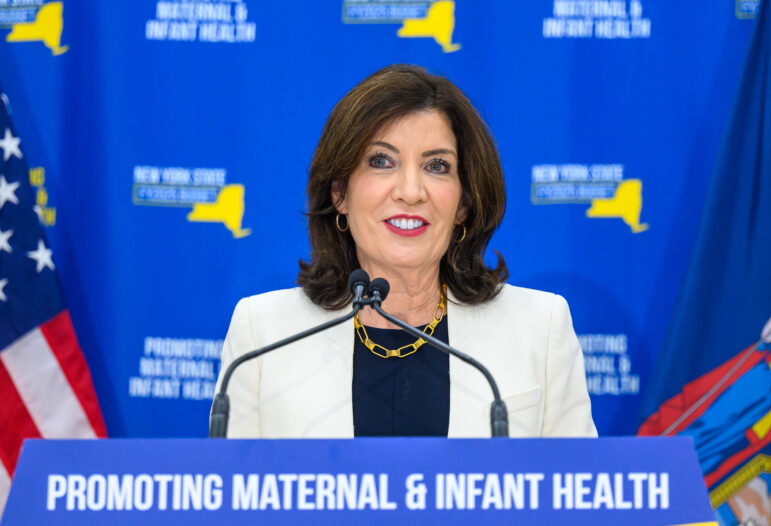Sonya Kim volunteered her time at Taiwan Center in Flushing last Tuesday, helping non-English-speaking voters find their correct polling places and other voting information. Kim, 66, who is Korean-American, said she was surprised at how many Korean-Americans showed up at the polls on Primary Day. Kim said that for her volunteering is important because it is empowering and promotes community involvement.
Kim was recruited through the Korean Americans League for Civic Action (KALCA), which worked with Citizens Union Foundation and the New York Immigration Coalition (NYIC) in recruiting more foreign language interpreters for the election. She is one of the more than 3,000 new poll workers, including 500 interpreters, signed up in the organizations’ summer outreach efforts, according to Citizens Union Executive Director Dick Dadey.
Citizens Union’s goal was to exceed last year’s recruitment figure of 1,500. Other immigrant groups, including NYIC, have recruited smaller numbers of workers. The 500 interpreters recruited helped meet the Board of Elections requirement to have volunteers on hand who are fluent in Chinese, Spanish and Korean.
“The overall goal is to supplement the pool of poll workers recruited by the political parties to work on election day by recruiting ordinary, unaffiliated citizens,” Dadey said.
Most poll workers are brought in by political parties, a situation his group wants to change. “Citizens Union Foundation has always been concerned with the bipartisan control of elections,” Dadey said. “We feel it should be a more non-partisan approach.”
NYIC has contributed to the recruitment effort largely by referring potential poll volunteers to Citizens Union. But NYIC’s effort is part of a broad and long-running campaign that spokesperson Alan Kaplan described as “three-pronged”: promoting civic participation and education among immigrants, running public education campaigns to “dispel myths about immigrants,” and organizing grassroots political action, including protests.
The group also works constantly to register voters. It has registered 240,000 immigrant voters since 1998, Kaplan said. It registered more than 2,700 this August alone. To aid its outreach efforts, NYIC is working with graduate faculty at CUNY to develop an immigrant voter database that will allow it to better target and track its efforts.
“I think this year we’re definitely going to make an impact on the election,” Kaplan said.
There’s still a long way to go in helping immigrant voters navigate the democratic process, and more education on the importance of their involvement is needed, said KALCA executive director Taehyo Park.
“I think this recruitment should be going on for the entire year instead of having a set period of time that the BOE recruits people,” Park said. He noted on-the-spot sign-ups, education and continuous dialogue with the community as ways to combat some of those problems. “They have to know the immediate impacts of it,” Park said.
From now through the registration cutoff Oct. 13, city government itself is focusing on registering traditionally under-registered groups including new immigrants and younger voters. Mayor Bloomberg and Voter Assistance Commission Executive Director Onida Coward Mayers last week announced the kickoff of “the most extensive pre-election registration and participation campaign ever undertaken by the VAC,” with 60 events across the five boroughs.







